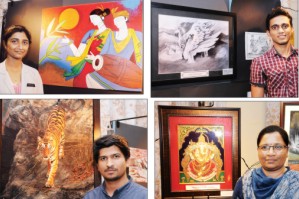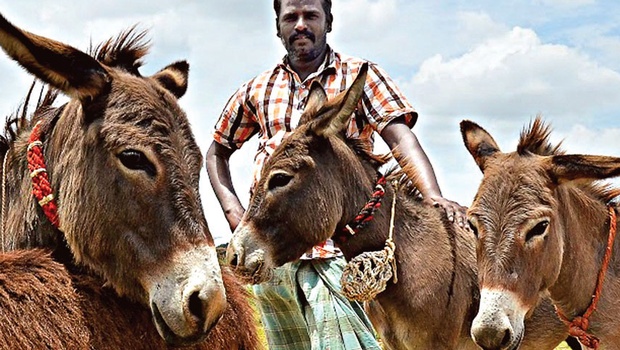by S.N.Venkatnag Sobers
Every child is an artist, the problem is staying an artist when you grow up – Pablo Picasso.
These words of Pablo Picasso holds good for every child who is born on the earth. Every child involves in multiple activities and it is for the parents and teachers to identify the talent of the kid and encourage them in the endeavours to achieve great heights in their field of interest. There have been examples of people who have been able to achieve their goals both in their professional lives and the career they pursue with a passion.
But, for students of medical education and medicos it is difficult to take some time off to pursue their hobby. Only a few find sometime to pursue their hobby and excel.
Recently, the JSS Medical College on the occasion of 99th birth anniversary of Sri Shivarathri Rajendra Swamiji had organised an art exhibition at its premises where the medicos, students and staff showcased their art works which ranged from photography, paintings to pencil sketching.
‘Lost in Ecstasy’, a pencil sketch by Dr. P.C. Rajath, a House Surgeon, was eye-catching. While, the painting of a dancing couple by Soumya Singh and Pahari painting of Subhra Singh, both students of 3rd MBBS also attracted a lot of attention.
Speaking to SOM, Sowmya Singh said that ‘Dancing Couple’ is a depiction of the couple who do not have any connection with the outer world but enjoy their time together.
Continuing with painting Dr. Malar, Assistant Professor, Dept. of Anatomy, JSS Medical College, who has painted the portrait of Lord Ganesh in Mysore Style of painting, said that she took around three years to complete the art work and added that it was a method to get rid of her stress. Dr. Malar has also painted an Owl using coffee powder.
The students have also showed their skills with photography with Dr. D.M. Vinay, a house surgeon, displaying photographs which he clicked at various National Parks across the country.
A photograph of a Tiger walking down the rocks clicked at Bandhavgarh, Madhya Pradesh, was one of the highlights of the exhibition. “Interest in photography started when I got involved in bird watching, animal census and tours with photographers. My aim is to capture whatever I see and show it to the people”, said Dr. D.M. Vinay.
This apart, the Dashavathra, pencil sketch by Taramani, a Second Division Assistant, JSS University, was mesmerising.
source: http://www.starofmysore.com / Star of Mysore / Home> Feature Articles / September 15th, 2014









